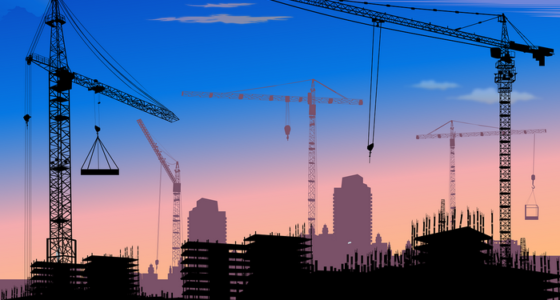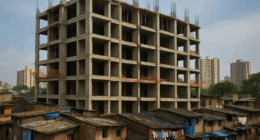· Major cities like Bengaluru, Delhi NCR and Kolkata witnessed about 30% rise in housing prices in two years
· Unsold inventory in Delhi NCR dropped the highest during 2021-2023 period, at 19%, followed by Chennai and Pune
· Housing prices across top eight cities in India increased 9% YoY in 2023
Amidst unwavering homebuyer confidence aided by a favourable interest rate cycle and positive economic outlook, housing demand scaled up and prices across the top eight[1] cities in India surged by about 20% in the last two years (2021-2023). Bengaluru, Delhi NCR, and Kolkata have witnessed the highest rise in average housing prices at about 30% in 2023 compared to 2021 levels. This robust growth is underpinned by a notable uptick in housing demand, particularly in the mid and luxury segments. Amidst significant new launches, developers were able to successfully pass on the rising cost of construction in most cases.
Overall, the unsold inventory saw a notable drop in 2021 and largely continued to remain rangebound until 2023 end, despite significant influx of new supply. During 2022 and 2023 housing markets across the major cities saw an increase in new property launches, in mid and luxury segments. In cities like Bengaluru, Hyderabad, Kolkata, MMR, and Pune new supply surged 2-2.5 times in the last two years, reflecting robust activity and improved developer-market sentiment. With healthy visibility of upcoming projects from established developers and unchanged repo rate, the residential market will see sustained growth in the short to medium term.
Boman Irani, President of CREDAI National stated, “The year-on-year increase in housing prices is a combination of a number of factors – characterized by strong, robust demand from homebuyers – especially for mid and premium segments, along with the existence of a conducive buying eco-system coupled with healthy macro-economic factors, and the rise in prices of construction materials. The ongoing momentum also encouraged numerous developers that has led to the increase in housing supply across major cities in India. We expect both – housing demand and supply – to thrust forward in 2024 not only in top 8 cities but in Tier II, III regions as well.”
“Housing prices continued to reflect strong market momentum and saw a 9% annual rise in 2023. The year outperformed in several areas including uptick in high-end & luxury segments, scaling new peak in sales volume, infrastructure led development, resulting in deeper price discovery across most of the markets. During the year, all the eight major cities witnessed an increase in housing prices, with Bengaluru, highest at 21% YoY, followed by Kolkata at 11%. Looking ahead to 2024, the market is well poised to maintain its current trajectory, with the mid and luxury segments expected to thrive further, offering lucrative opportunities for investors and homebuyers alike,” Badal Yagnik, Chief Executive Officer, Colliers, India
Pan India residential price trends (2021-2023) (in INR/sq ft) –
| City | Average Price 2021 | Average Price 2022 | Average Price 2023 | Price change (2023 vs 2021) | Price change (2023 vs 2022) | Price change (Q4 2023 vs Q3 2023) |
| Ahmedabad | 5,721 | 6,203 | 6,737 | 18% | 9% | 2% |
| Bengaluru | 7,609 | 8,276 | 9,976 | 31% | 21% | 5% |
| Chennai | 7,182 | 7,445 | 7,701 | 7% | 3% | 0% |
| Delhi NCR | 6,958 | 8,394 | 9,170 | 32% | 9% | 6% |
| Hyderabad | 8,821 | 10,090 | 11,083 | 26% | 10% | 0% |
| Kolkata | 6,081 | 7,144 | 7,912 | 30% | 11% | 7% |
| MMR | 19,657 | 19,287 | 20,047 | 2% | 4% | 2% |
| Pune | 7,398 | 8,379 | 9,185 | 24% | 10% | 2% |
Source: Colliers, Liases Foras
All the prices are based on carpet area
Bengaluru saw heightened residential activity during 2021-2023
Bengaluru noted a significant 31% increase in housing prices during 2021- 2023. The city’s rising streak has been largely consistent over the last two years backed by noticeable uptick in demand for residential properties near IT localities like Whitefield, KR Puram, and Sarjapur. The peripheral and outer East and West sub-markets witnessed the highest price hike in the last two years in the range of nearly 50-60%. Additionally, the city saw an average 2X rise in new launches in 2023, compared to 2021, with significant surge in luxury and ultra-luxury property launches in peripheral areas within the North and East sub-markets, as they emerge as prominent IT hubs.
Housing prices in MMR continues to witness a rise; unsold inventory swells
Average housing prices in MMR, the most expensive residential market amongst the top eight cities saw a modest yet steady 2% increase during 2023 compared to 2021 levels. Post-Covid-19, housing prices in MMR dipped and were steady henceforth for about three years. After a hiatus, prices increased during 2023 and inched closer to pre-Covid levels indicating recovery in the market. The sub-market of Panvel saw a significant surge with a 20% rise in the last two years, followed by Western Suburb (beyond Dahisar) and Navi Mumbai. The completion of the key infrastructure projects like Mumbai Trans Harbour Link (MTHL) and key metro lines, have led to a surge in prices in submarkets in and around Navi Mumbai and Western suburbs. With several upcoming major projects, housing prices are further expected to increase in the foreseeable future.
“Over the last two years from 2021 to 2023, cities like Delhi NCR, Chennai and Pune, registered a notable decrease in unsold inventory. While Delhi NCR led the pack with significant 19% drop, Chennai and Pune followed closely with about 5-10% drop each, during the two-year period. With an expected steady rise in income levels coupled with positive market sentiment, the demand momentum is likely to remain strong in these markets,” said Vimal Nadar, Senior Director and Head of Research, Colliers India.
“The current state of real estate is the most productive when sales, supply, and prices are growing, and the price rise is not speculative. These factors work in harmony in a balanced and healthy real estate market.”, said Pankaj Kapoor, Managing Director, Liases Foras.









